Kailua, Oahu, Hawaii
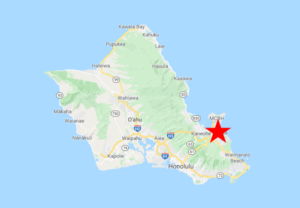
The town of Kailua is known mainly for its beaches and Marine Corps base, but it is also a haven for waterbirds. Kawainui Marsh and other wetlands provide habitat for the endemic “Hawaiian Gallinule”, Hawaiian Coot, and “Hawaiian Stilt”, and various introduced songbirds, including Japanese Bush-Warbler, Red Avadavat and four commoner waxbills. Security at the marine base has tightened since the 1990s, so the famous Red-footed Booby colony at Ulupau Head and its distant views of Moku Manu are generally closed to non-military visitors, but it remains possible to paddle a kayak out to the Wedge-tailed Shearwater colony on the Mokulua Islets.
Orientation
Directions
Kailua is in southeastern Oahu, on its windward coast, about 20 minutes’ drive (12 miles) east of Honolulu, or 20 minutes (18 miles), from Hawaii’s largest airport, Daniel K. Inouye International.
There are four main roads between Honolulu and Kailua, each of which could be more efficient depending on the starting point and traffic conditions. Three roads traverse the Ko’olau Range, and the fourth, a more scenic route, circumvents it.
From the airport, the H3 freeway is the fastest route. From the downtown area and Waikiki, the Pali Highway (Route 61) would usually be the fastest. Both are pleasant drives.
Between them lies the less enjoyable Likelike (LEE-KAY-LEE-KAY) Highway (Route 63), which is generally slower and less attractive, but can sometimes be the most efficient route from downtown Honolulu—or if traffic is heavy on the other routes.
If starting from anywhere in East Honolulu or combining a visit to Kailua with Koko Head and Makapu’u Point, the Kalaniana’ole Highway (Route 72) would be the best route.
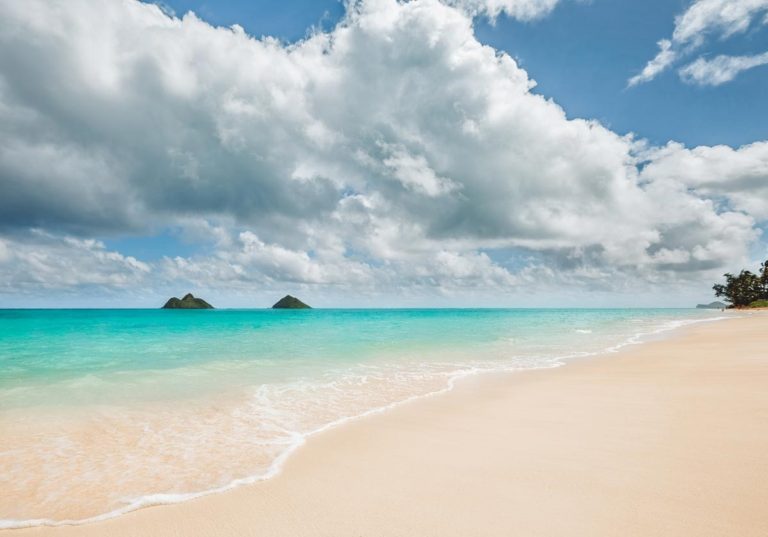
The Mokuluas, viewed from Lanikai Beach. © Stay Close Travel Far
Attractions
Kailua and Lanikai beaches are among the most attractive and popular in Hawaii.
Birdfinding
Kailua has long been known as a productive area for birds, but access has always been challenging. The combination of a military base, seabird colonies on offshore islets, and extensive marshlands creates an array of missed opportunities. In the 1980s permission to visit the military base was routinely granted but the marshes were difficult; in the 2020s the military base is off-limits but the marshes are more accessible.
Kawainui Marsh. The largest marsh in Hawaii was a prehistorical Polynesian fishpond that silted in and was repurposed for taro agriculture. The main public access is a 1.5-mile trail along its eastern edge. Its northern end is at Kaha Park and its southern end is at a small access road beside the Pali Highway—on the left side of the highway just before it enters the street grid of Kailua.
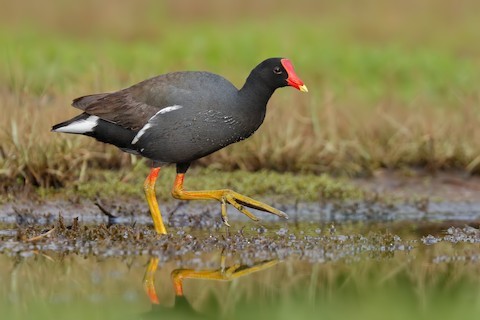
The “Hawaiian Gallinule” is common at Kawainui Marsh. © Sharif Uddin
The trail is in fact a dyke road that runs between two canals for most of its length. Parts of the canals remain open water and others are overgrown to varying degrees, so the trail gives access to varying wetland habitats. Birds that occur consistently along it include three endemic waterbirds—the “Hawaiian Gallinule”, Hawaiian Coot, and “Hawaiian Stilt”—and several introduced songbirds. The trail is notable as one of the better places on Oahu to find Japanese Bush-Warbler and Red Avadavat (plus four commoner waxbills: Common Waxbill, Scaly-breasted and Chestnut Munias, and Java Sparrow).
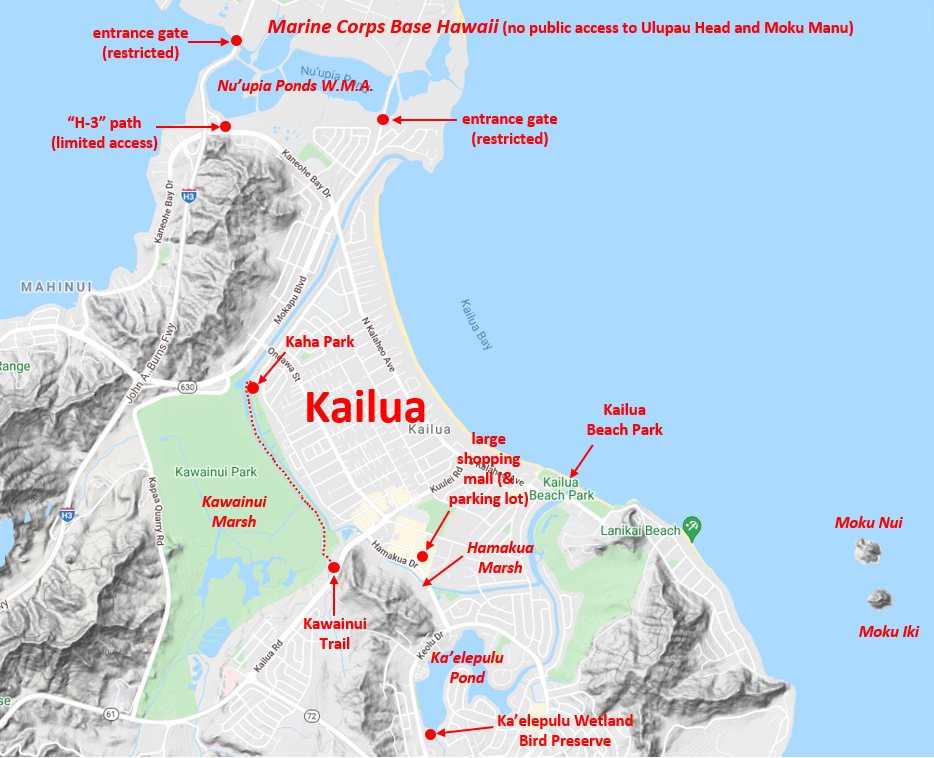
Hamakua Marsh. If taking the Pali Highway from Honolulu, when entering Kailua, turn right onto Hamakua Road. The road runs beside a wide creek or canal (Hamakua Stream), which it soon crosses over. Before reaching this bridge, turn left and park in the ample lot of the Windward Town & Country Plaza (a large mall), then walk back and cross Hamakua Road. For some distance there is a sidewalk beside the road and in other places there are rear parking lots, all abutting the canal and adjoining marshes. The species that inhabit these waters and marshes are similar to those at Kawainui Marsh (above).
Ka’elepulu Wetland Bird Preserve. Continuing to the end of Hanakua Road will bring you to the Enchanted Lake neighborhood, which is built around Ka’elepulu Pond. At the southwestern end of the pond there is a small marshy area that is designated as Ka’elepulu Wetland Bird Preserve. The same endemic wetland birds mentioned above occur here, with Hawaiian Coot being especially numerous. The pond is deep enough that it sometimes attracts vagrant diving ducks, which have included Bufflehead, Ring-necked Duck, Lesser Scaup, Tufted Duck, and Red-breasted Merganser.

Male Red Avadavat at Hamakua Marsh. © Alexander Viduetsky
Mokulua Islets. Less than a mile offshore to the east of Kailua, directly off of Lanikai Beach, is a pair of enticing islets: Moku Nui and Moku Iki. They are protected as a seabird sanctuary, and most of their land area is off-limits. However public access is allowed during daylight hours on the small sandy beach on the south side of the northern islet (Moku Nui).
Kayaks are available to rent at Kailua Beach Park, so visiting the Mokuluas entails paddling about two miles each way through water that is often rough—this is Oahu’s windward coast. Visitors should be cautioned that the roughest water is usually around the islets, where anomalous wave patterns often develop.
Two species of tubenose breed annually on the Mokuluas: Bulwer’s Petrel (~150 pairs) and Wedge-tailed Shearwater (~10,000 pairs). Only the shearwater can be expected, however, because the petrel generally arrives at or after dusk. In addition, there is at least one nesting record for Christmas Shearwater—conceivably, it might occur more regularly, undetected. (Small numbers nest annually about five miles north on Moku Manu. See below.) A few other seabirds are regular as fly-bys: mostly Red-footed Booby and Great Frigatebird.
Nu’upia Ponds Wildlife Management Area (Limited Public Access). The outer portion of the Mokapu Peninsula is military property, Marine Corps Base Hawaii (formerly known as Kaneohe Marine Corps Base Hawaii). The base enjoys the natural barrier of a wide, shallow moat, a complex of old fishponds called Nu’upia Ponds, which is within the base’s perimeter and protected as a wildlife sanctuary. Public access is generally limited to a narrow corridor along the western edge of the ponds, the “H-3” road, which provides a narrow window into a large expanse of productive habitat.
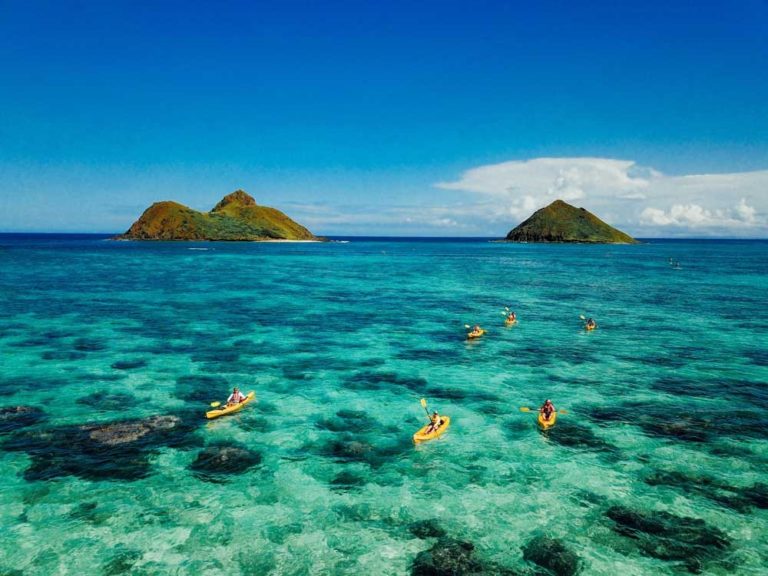
Kayakers returning from the Mokuluas. © Kailua Beach Adventures
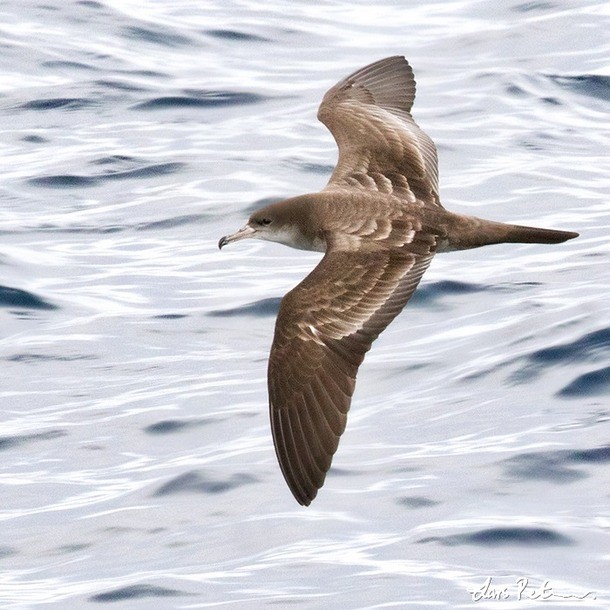
Wedge-tailed Shearwater is the main seabird of the Mokuluas. © Lars Petersson
Due to constraints on access, bird observations from Nu’upia Ponds are sparse and do not reflect the site’s potential. The shallow ponds are prime habitat for breeding “Hawaiian Stilt”, as well as many migratory shorebirds. They are also among the few places on Oahu where “Hawaiian Noddy” consistently feeds near the shoreline. Exceptional sightings have included North America’s first record of Great Crested Tern (October 1988 to August 1989).
For current information about potential permission to visit Nu’upia Ponds and other areas within the base perimeter, as well as the procedures required at the time of your visit, contact the base’s Natural Resources Management office at 808-257-7000.
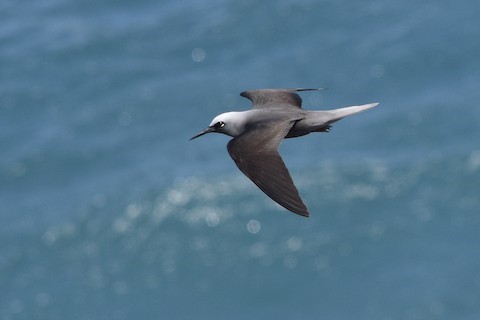
The “Hawaiian Noddy” differs from typical Black Noddies in its frosted gray head and tail and orange feet, and seems to be a likely candidate for eventual recognition as a separate species. © Michael Pang

Ulupau Head (No Public Access). From April to November, Marine Corps Base Hawaii hosts a large colony of Red-footed Boobies, at the tip of the Mokapu Peninsula on the slopes of Ulupau Head—similar to the colony at Kilauea Point on Kauai. Since the 1980s the nesting population has fluctuated between about 500 and 1,000 pairs.
In decades past, the Marine Corps regularly granted requests by civilian birdwatchers to observe the colony, but the visitation policy tightened over time. For most of the early 2000s, permission was limited to groups organized annually by the Hawaii Audubon Society. Those visits became more sporadic and appear to have ceased altogether—although perhaps circumstances will eventually change and allow for visits to resume.
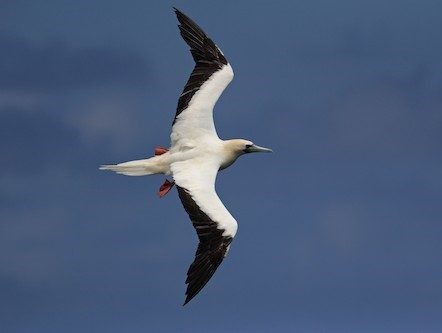
A few Red-footed Boobies from the large Ulupau Head colony can often be seen around the Mokuluas. © Ben Lagasse
Moku Manu (No Public Access). Oahu’s most diverse seabird colony is a pair of barren islets that sit less a mile north of Ulupau Head. Not surprisingly, the islets are closed to visitors. The larger islet is distantly visible from the tip of Mokapu Point, and with powerful optics some observation and identification of the breeding birds is possible. In the era when permission to visit the base was granted, observation of Moku Manu from this vantage point—with a strong enough scope—reliably produced sightings of Gray-backed Tern, at its only known nesting site in the main Hawaiian islands.
At least ten species breed annually on Moku Manu. For three, this is the principal or only regular nesting site in the main Hawaiian Islands: Christmas Shearwater (~50 pairs), Masked Booby (~50 pairs), and Gray-backed Tern (~20 pairs). Apart from Moku Manu, the nearest colony of all three is at remote Ka’ula Rock, 25 miles southwest of Ni’ihau. The other seven that breed annually are: Bulwer’s Petrel (100 pairs), Wedge-tailed Shearwater (2,000 pairs), Red-footed Booby (200 pairs), “Forster’s Booby” (100 pairs), Brown Noddy (2,000 pairs), “Hawaiian Noddy” (75 pairs), and Sooty Tern (15,000 pairs).
Moku Manu is also the largest roosting site for Great Frigatebird, with counts that sometimes exceed 1,000 individuals. It has been found nesting there twice—the only confirmed nesting records from the main Hawaiian Islands.

The Gray-backed Tern breeds on nearby Moku Manu but is very rarely seen at Kailua without access to Ulupau Head. © Cameron Rutt
Services
Accommodations
Despite its popularity with beach-going tourists, Kailua’s local accommodations are generally limited to B&Bs. The nearest concentration of hotels is in Waikiki, fifteen miles south of Kailua.
Notes
Hazards & Hassles
Marine Corps Base Hawaii protects a high density of outstanding bird habitat, including Nu’upia Ponds, Ulupau Head, and Moku Manu. Access is frustratingly prohibited or tightly controlled. Policies have changed over time, and will likely continue to evolve in ways that cannot be predicted. For information on access options, permission, and procedures at the time of your visit, contact the base’s Natural Resources office at 808-257-7000.
Links